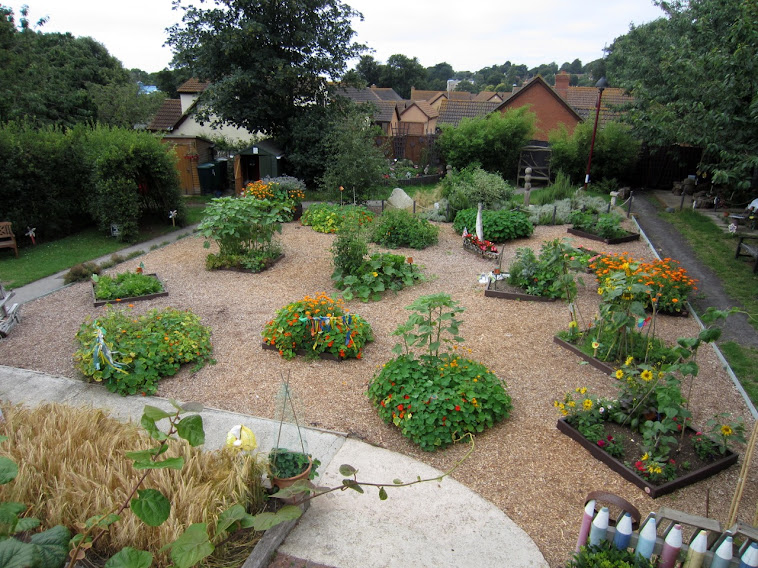Attributed to Confucius.
Work continues on the Jurassic garden. This last weekend attention was given to the nest area and the short paths which will link up the whole garden once finished. Creating a good egg shape took time but after a lot of measuring and re-measuring the edging boards were finally secured to the fixing posts after checking the levels.
 |
| Taking shape |
 |
| The required shape at last! |
 |
| The two yellow posts were the datum points for checking levels |
During the work a few large bright green frogs were disturbed but they were safely relocated to the pond.
 |
| A large healthy frog |
Something caught our eyes during a tea break. A large orange spider appeared on one of the path edging boards. It looked very formidable but was just a large female specimen of the Garden Orb Spider Araneus diadematus. The spider is a very skilled web builder. The males are much smaller and approach the female with caution. Often they become the next meal!
 | |
| Araneus diadematus |
Some gardening was also done and one of the Bird Cherry trees along the woodland walk was moved to a better position. The tree had hardly grown compared to the one alongside it. Perhaps too much shade had inhibited growth. It is now enjoying plenty of light on the edge of the shrubby area behind the World War 2 garden
 |
| The repositioned Bird Cherry tree |
A small group of colourful blue-green mushrooms were spotted growing out of the bark chip mulch. They could well be Stropharia aeruginosa or the Verdigris Agaric. They will be revisited during the week and the species hopefully then confirmed. If they are Verdigris Agaric they are NOT to be eaten!
Bees are still active in the garden and Red Admiral and Peacock butterflies were on the wing all weekend. A single Migrant Hawker dragonfly was seen and several late Swallows flew overhead on their way to South Africa-a journey of some six thousand miles!
 |
| A busy insect! |
Colour still floods into the garden as October slides into November
At the end of the afternoon a mist net was set and we picked up where we left off at the end of last winter. Studying some of the local birds and their movements. In late afternoon a lot of birds move through the school garden on their way to roost sites. The garden holds a large roost of over one hundred Greenfinchs. However we managed to catch and ring a few Long-tailed tits. These small birds will often travel considerable distances so we are happy to continue contributing to the study of our avian friends.
 |
| A delightful bird- the Long-tailed Tit |
 |
| Staring at the camera! |
Work will continue on the Jurassic project in readiness for the next delivery of material. Once the construction has been finished off we can concentrate on the planting up.







































